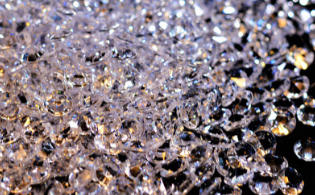Dazzling Geminids Meteor Shower 2023: Plan Your Perfect Stargazing Getaway Under Dark Skies!

The upcoming Geminids Meteor Shower, renowned among experts as one of the most consistently prolific celestial events of the year, is just a few weeks away, promising a spectacular display of asteroid debris to conclude a year filled with awe-inspiring stargazing. Despite the potentially chilly winter setting depending on your location, there’s still time to organize a trip to a dark sky location for an enchanting experience—whether or not kids are part of the plan.
READ: applooter.com: Unlocking the World of Rewards
What is the Geminids Meteor Shower?
The Geminids Meteor Shower is truly exceptional, earning favor among avid stargazers due to its consistent activity. According to the American Meteor Society, it typically reaches its peak with an impressive rate of 150 meteors per hour. Notably, the Geminids meteors move leisurely across the sky, emitting a vibrant and easily discernible bright yellow glow, as highlighted by The Farmer’s Almanac.
Distinguished from other meteor showers, the Geminids originates from the remnants of an asteroid named 3200 Phaethon, setting it apart from those resulting from comet debris. Remarkably, this meteor shower has a rich history, dating back nearly 200 years to its first recorded sighting in 1833 along the Mississippi River—an astronomical legacy that connects us with the past.
When Will the 2023 Geminids Meteor Shower Peak?
Anticipated to peak on the nights of December 13 and 14, depending on your time zone, the 2023 Geminids Meteor Shower will be active in our skies from November 19 to December 24.
Best Conditions for Watching the 2023 Geminids Meteor Shower
To optimize your viewing experience, experts recommend finding a dark sky away from city lights and bright moonlight. Whether it involves driving away from urban areas, embracing the rural setting, or visiting a designated dark sky park, ensuring minimal light pollution is key. While no special equipment is required, dressing warmly and bringing sleeping bags for comfort during the potentially cold event is advisable. If in a light-polluted area, allow time for your eyes and those of your family to adjust to the darkness.
The meteor shower can commence as early as 9 p.m. and reach its peak in the early morning hours around 2 a.m. Coinciding with December’s new moon, this period ensures dark skies for optimal viewing.
Dark Sky Parks for Prime Geminids Meteor Shower Viewing
Recognizing light pollution as a significant hindrance, consider venturing to a designated “dark sky park” for an unparalleled view. The International Dark-Sky Association (IDA) identifies and certifies locations across the U.S. as “starry sky parks.” More than half of U.S. states boast at least one such location, including national parks. For an extraordinary meteor shower experience, here are a few recommended dark sky parks:
Black Canyon of the Gunnison National Park in Colorado
Cape Lookout National Seashore in North Carolina
Cherry Springs State Park in Pennsylvania
City of Rocks National Preserve in Idaho
Death Valley National Park in California
Geauga Observatory Park in Ohio
Grand Canyon National Park in Arizona




